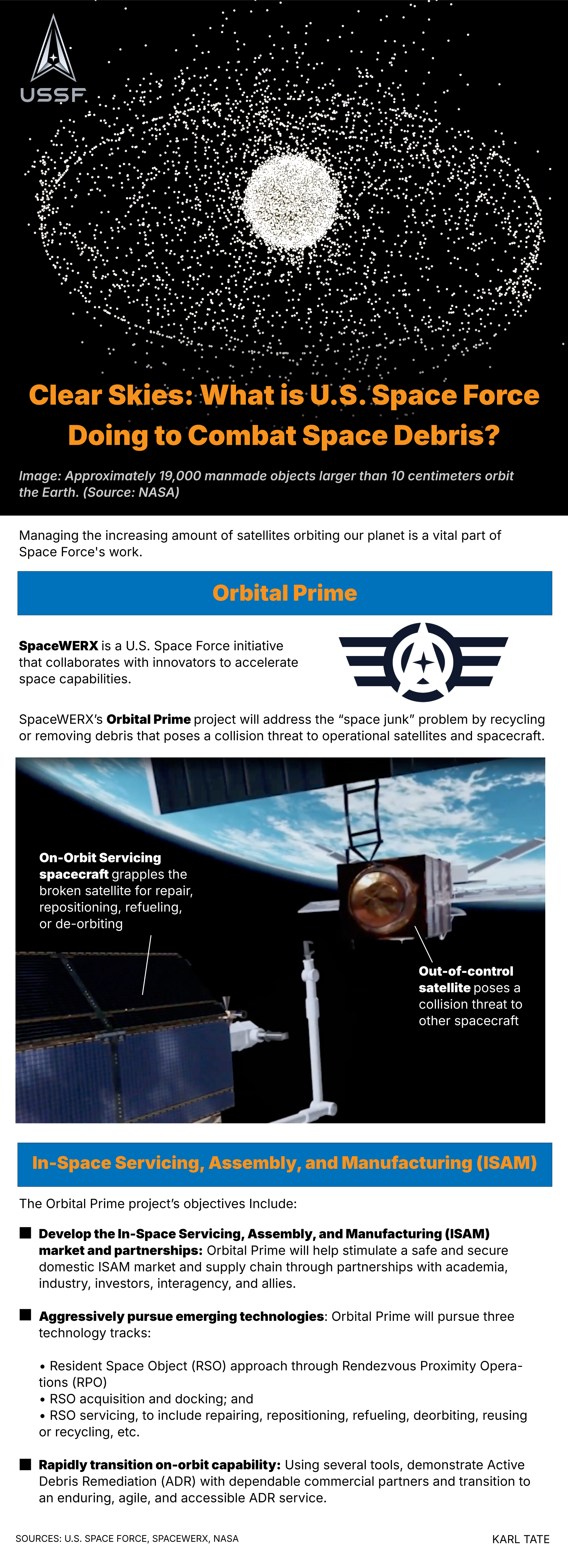An 8,000-ton problem: How to combat space debris
The skies may look clear from our perspective, but just out of view, there's a junkyard in our low Earth orbit (LEO), a region of space relatively close to our planet's surface. There are approximately 60,363 tracked objects in orbit, the vast majority of which is space debris. That number doesn't even include the over one hundred million bits and bobs too small to be tracked. Some speculate that there are over 8,000 metric tons of debris floating around, including non-functional satellites, discarded rocket parts, and broken pieces of spacecraft.
The working satellites in our LEO are vital to our global infrastructure, and with debris moving through space at almost seven times the speed of a bullet, even the smallest impact can create a huge problem. This is an issue we all have a stake in—here's how the U.S. Space Force is working to tackle it.

Space may seem nearly endless, but our orbit is finite. With no international laws in place to clean up debris, the responsibility must be shared. The U.S. Space Force is doing their part by stepping up and working to keep our planet safe.
Breaking space news, the latest updates on rocket launches, skywatching events and more!

Karl's association with Space.com goes back to 2000, when he was hired to produce interactive Flash graphics. From 2010 to 2016, Karl worked as an infographics specialist across all editorial properties of Purch (formerly known as TechMediaNetwork). Before joining Space.com, Karl spent 11 years at the New York headquarters of The Associated Press, creating news graphics for use around the world in newspapers and on the web. He has a degree in graphic design from Louisiana State University and now works as a freelance graphic designer in New York City.
